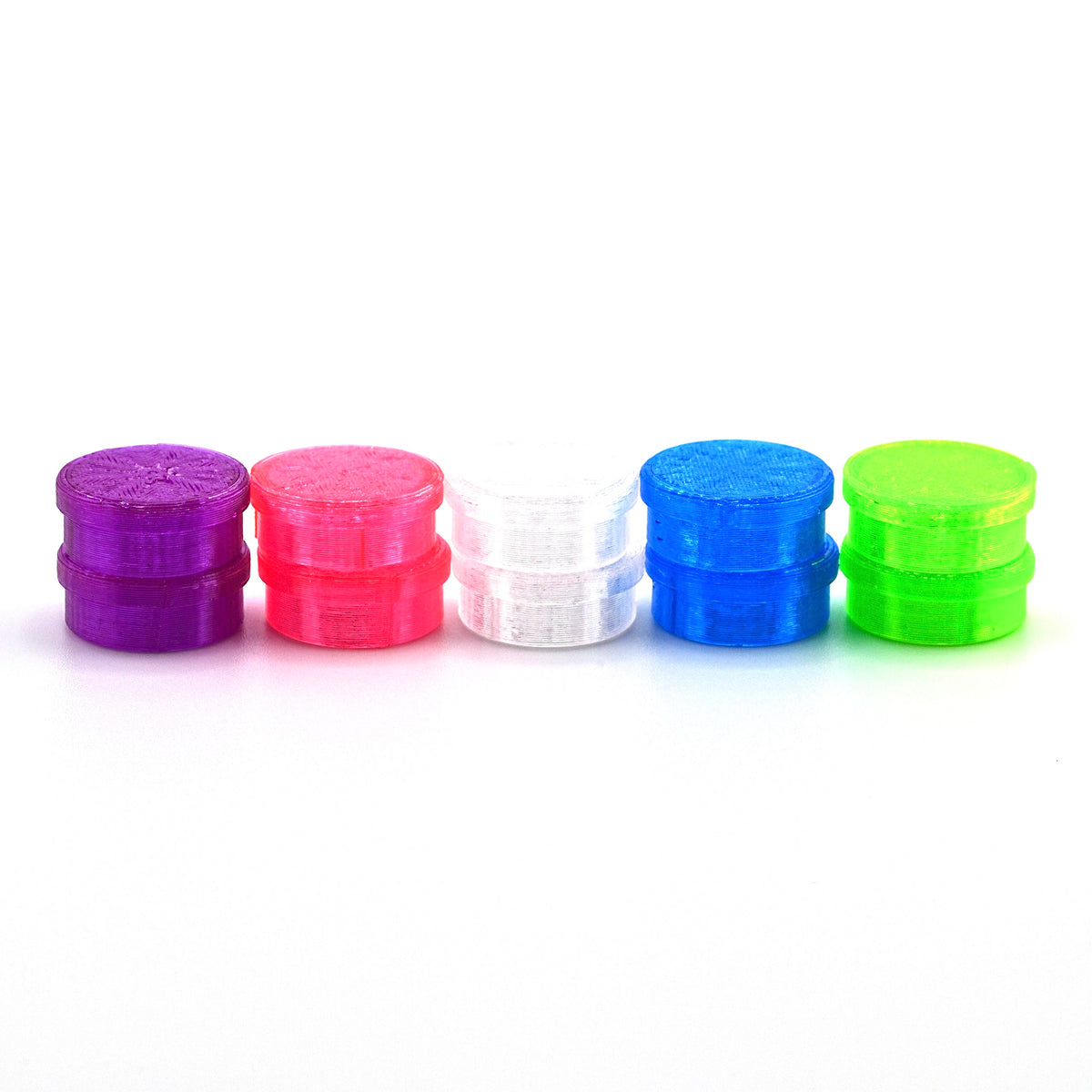Updated on: 2025-11-05
Vial case table of contents and quick navigation
- Why a vial case streamlines lab and field sampling
- Use cases: vial holder, vial rack, and vial storage box
- Choosing a sample transport case for secure travel
- Did you know these vial case facts?
- Comparison: pros and cons of popular vial case formats
- Hard, waterproof vial case with foam insert
- Lightweight vial holder or vial rack
- Stackable vial storage box
- Buyer’s checklist for the right vial case
- What size vial case should I choose for 2 mL vials?
- Capacity planning and growth
- Mobility vs. bench stability
- How to clean and sterilize a lab vial case safely
- Foam insert care
- Seal and latch maintenance
- Real-world proof: testimonials and results
- Final thoughts and advice on choosing a vial case
- Questions and answers about vial cases
- What size vial case should I choose for 2 mL vials?
- How do I clean and sterilize a lab vial case?
- Is a waterproof vial case with foam insert necessary for field sampling?
- Difference between a vial rack, vial holder, and vial storage box
Why a vial case streamlines lab and field sampling
A reliable vial case is a small change that delivers big protection. It organizes samples, prevents impact damage, shields labels from moisture, and speeds handoffs between people and locations. Whether you’re moving 2 mL autosampler vials across the bench or sending a cooler into the field, a purpose-built vial case reduces risk. It also replaces improvised containers with a system built for traceability and repeatable workflows.
Many teams mix and match formats: a compact vial holder at the bench, a stackable vial storage box in cold rooms, a rugged sample transport case for couriers, and a waterproof vial case with foam insert for off-road fieldwork. The right combination improves uptime, reduces re-labeling, and helps you keep chain of custody clear and clean.
Use cases: vial holder, vial rack, and vial storage box
- Analytical labs: organize 2 mL and 4 mL vials in a vial rack for rapid prep and loading.
- Environmental sampling: carry a portable vial case for field sampling with shock protection.
- Stability storage: stack a labeled vial storage box to keep batches separated and easy to find.
- Teaching labs: use color-coded vial holders to simplify set-up and end-of-day checks.
Choosing a sample transport case for secure travel
Transport adds shock, vibration, dust, and moisture. A sample transport case should shield caps and labels, keep vials upright, and close securely. If you expect rain or temperature swings, a waterproof vial case with foam insert gives the best all-around protection without adding complexity to your labeling system.
Did you know these vial case facts?
- Impact and temperature swings are common reasons caps loosen during travel; foam cutouts reduce that risk by keeping vials upright and isolated.
- Label damage often starts with condensation; sealed cases that limit moisture help labels stay readable.
- Consistent spacing from a foam insert or rigid grid makes visual inventory faster and reduces miscounts.
- Color-coding vial holders or racks can cut search time and prevent cross-mixing between projects.
Comparison: pros and cons of popular vial case formats
Each format has strengths. Pick based on the risks you face most, the volume you carry, and how often you move samples between zones.
Hard, waterproof vial case with foam insert
- Pros:
- Maximum impact and moisture protection during transport.
- Custom foam for 2 mL, 4 mL, 10 mL, or mixed layouts.
- Secure latches and airtight seals to protect labels and caps.
- Cons:
- Heavier than a simple vial rack or holder.
- Foam requires periodic inspection and replacement.
- Best for: Field teams, couriers, off-site transfers, and any workflow that crosses buildings or vehicles.
Lightweight vial holder or vial rack
- Pros:
- Fast loading and unloading at the bench.
- Low weight and easy cleaning.
- Good visibility for labeling and barcodes.
- Cons:
- Limited protection against shock and moisture.
- Not ideal for outdoor or vehicle transport without a secondary case.
- Best for: Daily bench work, prep zones, and short, supervised moves.
Stackable vial storage box
- Pros:
- Space-efficient and easy to label on shelves or in cold storage.
- Grid inserts maintain order and reduce mix-ups.
- Affordable way to scale storage density.
- Cons:
- Less protection than a hard, waterproof shell.
- May need an outer transport case for long moves.
- Best for: Archiving, batch organization, and stationary storage.
Buyer’s checklist for the right vial case
- Compatibility:
- Confirm vial diameters (2 mL autosampler vials are commonly ~12 mm) and heights.
- Check cap style and headspace clearances for foam or grid inserts.
- Protection level:
- Do you need waterproof and dustproof seals? If yes, choose a hard, gasketed case.
- For mild, indoor moves, a rigid vial holder or vial rack may be enough.
- Capacity:
- Pick a layout that matches your batch size without crowding.
- Leave room for growth to avoid buying twice.
- Label safety:
- Ensure inserts don’t rub printed areas during vibration.
- Choose cases with smooth, snag-free interiors.
- Portability:
- Consider weight, handle comfort, and ability to carry with gloves.
- Look for latches you can open with one hand if needed.
- Cleanability:
- Confirm materials tolerate your cleaning agents.
- Check if foam inserts are removable or replaceable.
- Traceability:
- Plan a labeling system for the case and internal rows.
- Choose color-coding options for projects or hazards.
What size vial case should I choose for 2 mL vials?
Most 2 mL autosampler vials fit 12 mm diameter cutouts. For safe handling and label clearance, a foam insert with 12.5–13 mm pockets usually works well, while a rigid grid should match 12 mm cells. Height varies by brand; ensure your insert depth keeps caps below the case lid to avoid pressure on threads. If you carry mixed sizes, consider a two-layer foam design: 2 mL on top, larger vials below.
Capacity planning and growth
Choose the smallest vial case that carries your average batch with a 10–20% buffer. Two smaller cases often travel better than one oversized case because they stack and strap more securely. If your workload swings, modular cases that share foam trays give you flexibility without relabeling.
Mobility vs. bench stability
If you seldom leave the bench, a sturdy vial rack or holder may be ideal. If you change buildings, ride in vehicles, or go outdoors, a waterproof vial case with foam insert is worth the small weight penalty. For hybrid workflows, store in a vial storage box and transfer the active batch to a portable vial case for field sampling on demand.
How to clean and sterilize a lab vial case safely
Before cleaning, confirm the case material and foam type. Most hard polymer cases tolerate mild detergent and water. Many foams tolerate gentle hand-cleaning but not strong solvents. If you need to sterilize, check the manufacturer’s limits; some cases accept alcohol-based wipes on hard surfaces, while certain foams should air-dry and avoid saturation.
General approach: empty the case, remove the foam insert, brush out debris, and wash hard surfaces with a mild, non-abrasive cleaner. Rinse and dry thoroughly. For disinfection, use an agent compatible with the material and follow contact-time guidance from the product label. Re-seat the foam only after both parts are fully dry to prevent trapped moisture. If the case supports it, consider keeping a spare insert so one can dry while the other is in use.
Foam insert care
Inspect foam for compression, cuts, and chemical exposure. Replace inserts that lose shape, shed particles, or no longer grip vials firmly. Label the insert itself so it always returns to the matching case body, maintaining fit over time.
Seal and latch maintenance
Wipe gaskets and latches to remove dust, salt, or residue. Check for smooth latch closure—if the seal pinches, re-seat the gasket before closing. Periodic checks prevent leaks and keep the case easy to open and close with gloves.
Real-world proof: testimonials and results
“Switching to a waterproof vial case with foam insert cut our sample breakage to near zero during rainy site visits. The labeled rows also made chain-of-custody checks faster.” — Field Lead, environmental sampling
“We keep a slim vial holder at each bench and transfer to a hard case for courier pickups. The process is simple and we’ve stopped reprinting smudged labels.” — Lab Supervisor, analytical testing
“Color-coded vial storage boxes helped us separate projects at a glance. Inventory counts went from a hassle to a 2-minute check.” — Operations Coordinator
Final thoughts and advice on choosing a vial case
The best vial case is the one that matches your day-to-day risks. If you handle frequent transport or unpredictable weather, pick a hard, waterproof design with a snug foam layout. If you work mostly at the bench, keep a lightweight vial rack or holder for speed and visibility. For archiving, turn to stackable vial storage boxes and a clear labeling system. Align format to risk, then standardize layouts across teams to reduce training and errors.
Ready to upgrade protection and speed? Choose a durable, waterproof vial case with foam insert for fieldwork and pair it with a bench-friendly vial holder. This two-part setup keeps samples safe and makes your workflow more predictable from prep to delivery. Explore options and standardize your layout across teams to protect every vial, every time.
Questions and answers about vial cases
What size vial case should I choose for 2 mL vials?
Look for inserts designed around ~12 mm vial diameters. Foam pockets of 12.5–13 mm offer a secure but non-abrasive grip, while rigid grids should be 12 mm. Confirm insert depth so caps sit below the lid without pressure. If you carry many 2 mL vials, a dedicated 50–100 pocket layout balances capacity and weight.
How do I clean and sterilize a lab vial case?
Remove vials and the insert, then wash hard parts with mild detergent and water. Rinse and dry completely. Use a compatible disinfectant for hard surfaces as needed, avoiding chemicals that degrade foam. Only reassemble when all components are fully dry. Replace foam if it loses shape or sheds particles.
Is a waterproof vial case with foam insert necessary for field sampling?
If you face rain, dust, or vibration, it’s the safest choice. The gasketed shell blocks moisture, and the foam insert separates vials to prevent impact damage and cap loosening. For short, controlled indoor moves, a simple vial holder or rack can be enough; for vehicles or outdoors, go waterproof.
What’s the difference between a vial rack, vial holder, and vial storage box?
A vial holder or vial rack is an open organizer for bench work—fast access, minimal protection. A vial storage box adds stacking and labeling for shelves or cold rooms. A sample transport case or waterproof hard case adds impact and moisture protection for travel and field sampling. Many teams use all three for different stages of the workflow.

Elena Voss is an engineer and stylist passionate about designing functional yet stylish solutions for modern laboratories. With a background in engineering and product design, she brings creativity and precision together to make lab storage not only reliable but also visually appealing. Elena contributes expert insights and styling tips to help users maximize efficiency while maintaining a professional aesthetic.






